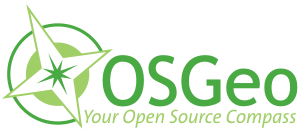Selected Presentations
Home > Presentations > Abstract details
Title
EVALUATING LANDSCAPE CONECCTIVITY BASED ON CUMMULATIVE COST RASER USING GRASS AND POSTGIS
Abstract
Landscape connectivity is one of the important indicator to evaluate landscape properties for wildlife movement, dispersal and habitat selection, especially for the wildlife living on the ground.
For example, it is well known that crop damage by wild mammals were related to accessibility from their habitat to agricultural fields, in the Japanese rural area. The accessibility is under influence of geographic features such as roads, building lands, abandon fields, etc... To take countermeasure against this problem, it is required that evaluating landscape connectivity with consideration for these geographic features.
Many study using cumulative cost methods to evaluate landscape connectivity. But this methods can evaluate from landscape elements or between landscape elements. The aim of this paper is developing a methods for evaluating connectivity of whole landscape level.
In this study, we combined r.cost module of GRASS, PostGIS and shell script. This method needed a cost surface raster and land use map raster. First we made the cumulative cost raster from a cell of land use map using r.cost module with max_cost option. This cumulative cost raster was converted to the MASK and we counted each land use categories within the MASK using r.stats. We made a simple shell script to conduct this procedure for each cell of the land use map. The result of this step was individual text files. We convert these files into a single csv file, and stored the csv file into PostGIS.
We can evaluate and visualize whole landscape connectivity based on this methods. Then, we evaluated landscape structure using this methods in the Motegi town, rural area of Japan.
Authors
Nobusuke Iwasaki - National Institute for Agro-Environmental Sciences

